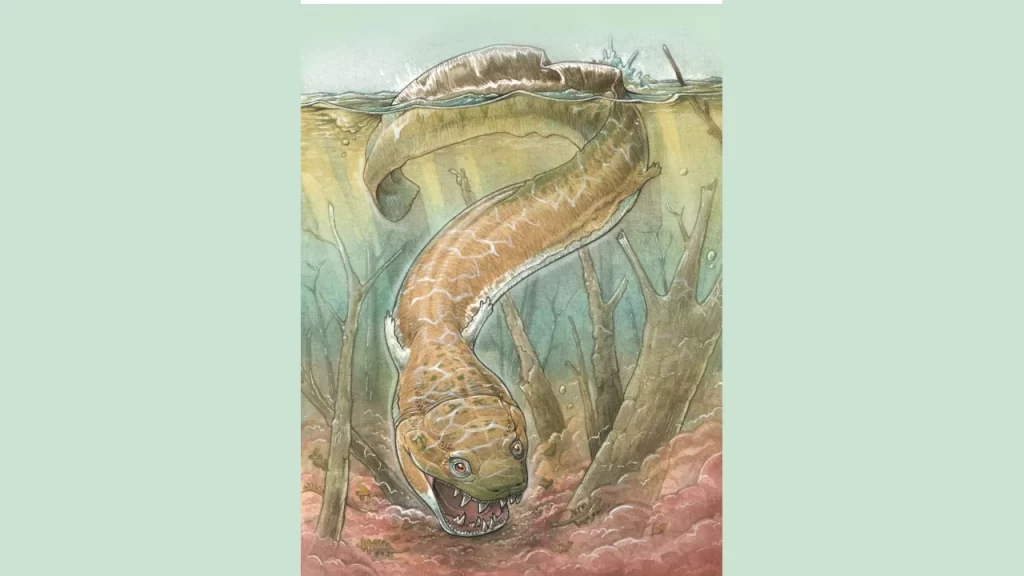Scientists have made a groundbreaking discovery- the fossils of a large salamander-like creature with pointed teeth that once ruled the waters, predating the emergence of the first dinosaurs.
Researchers describe the predator, larger than a human, as a unique creature that likely used its broad, flat cranium (bones that form the skull) and front teeth to capture and dismantle its prey. Its cranium, a remarkable 60 centimeters in length, sets it apart from any known species.
“It acted like an aggressive stapler,” says Michael Coates, a biologist from the University of Chicago who was not involved in the study.
Four fossils, including portions of a cranium and spine, were discovered approximately a decade ago and have been subjected to analysis.

The journal Nature published the results of an investigation into the organism Gaiasia jennyae on July 3. It existed approximately 40 million years before the emergence of dinosaurs.
Researchers have long investigated these ancient predators to ascertain the origins of tetrapods, which are four-legged animals that evolved into amphibians, birds, and mammals, including humans, by climbing onto land with fingertips rather than fins.
Most early tetrapod fossils are found in warm prehistoric coal swamps near the equator in present-day North America and Europe. However, these newly discovered fossils, dating back approximately 280 million years, were found in Namibia, a region of Africa that was once covered in glaciers and ice-a surprising and unexpected habitat for these creatures.
This implies that tetrapods may have inhabited colder climates earlier than scientists had anticipated, which raises additional concerns regarding their origin and arrival on Earth.
“The early history of the first tetrapods is much more complex than we thought,” says study co-author Claudia Marsicano from the University of Buenos Aires.
The name of the organism is derived from the Gai-As rock formation in Namibia, where the fossils were discovered, and from the late paleontologist Jennifer Clack, who conducted research on the evolution of tetrapods.



